All About Rolling Mills
I am what you would consider a weekend jewelry maker. There are some tools I will invest more money in because I use them quite often and want them to last. A case in point would be pliers. I own quite a few Lindstrom RX Ergonomic pliers and love them. They are much easier than other pliers on my arthritic hands. I do, however, use my craft store pliers for many things. I always advise beginners to purchase a moderately priced set because they don't know if they will continue making jewelry. After a while, if they want to upgrade tools, I suggest the best tools they can afford because they do make a difference.
One of the most important questions to ask yourself when purchasing any new equipment or tools is how much you will use it. If the answer is "a lot," then you should purchase the best you can afford.
Two years ago I purchased a rolling mill. It was in the "want" category for years, but not a need. I felt that a mid-range quality rolling mill would work for me just fine because I am 70 years old and would not be using it for as many years as I would have if I had purchased it at a younger age. I had only one "must have" and that was that the crank gears be covered as a safety feature because one never knows what small grandchildren will do when you are not looking. If the mill would have been placed in my jewelry making room, I could have closed it away and there would be no problem. But because that room is the laundry, and there is always some humidity-the nemesis of the mill rollers, that was not possible. I also knew I would not be using the mill to make wire-too fiddly for me at this stage of the game-so I opted not to purchase those extra rollers, which would have been worth it if I were younger.
When I ordered it, I was not thinking about what to put it on so had to build a cabinet for it. You will need to attach it to something that is VERY STABLE and that will NOT MOVE. Note: If this cabinet stood alone, and not attached to another one, or a wall or floor, it would not work.
Two years ago I purchased a rolling mill. It was in the "want" category for years, but not a need. I felt that a mid-range quality rolling mill would work for me just fine because I am 70 years old and would not be using it for as many years as I would have if I had purchased it at a younger age. I had only one "must have" and that was that the crank gears be covered as a safety feature because one never knows what small grandchildren will do when you are not looking. If the mill would have been placed in my jewelry making room, I could have closed it away and there would be no problem. But because that room is the laundry, and there is always some humidity-the nemesis of the mill rollers, that was not possible. I also knew I would not be using the mill to make wire-too fiddly for me at this stage of the game-so I opted not to purchase those extra rollers, which would have been worth it if I were younger.
When I ordered it, I was not thinking about what to put it on so had to build a cabinet for it. You will need to attach it to something that is VERY STABLE and that will NOT MOVE. Note: If this cabinet stood alone, and not attached to another one, or a wall or floor, it would not work.
The problem with mid and lower priced rolling mills is that they have no gear markings for setting the rollers. When a rolling mill arrives at your doorstep, it is in pieces covered in grease to keep it from rusting. Putting it together is not difficult, but some come without directions. Youtube is a great resource. It took a while, but I finally got the rollers, roller gears and T-crank set so they evenly impressed texture in metal. I also got used to knowing how far to turn the T-crank (more expensive mills have a wheel crank) to get impressions in various gauge metals.
Last summer, after the grandchildren had been here, I wanted to use the rolling mill to texture a piece of metal for a new design. I could not turn the crank and could not figure out what was wrong. Everything seemed to look fine. I started taking things apart and realized that the roller gears and the roller gear crank had be "played" with. DRAT! It took some time and a lot of copper to get the rollers, gears and T-crank where they needed to be. That is when I decided I needed gear markings.
Last summer, after the grandchildren had been here, I wanted to use the rolling mill to texture a piece of metal for a new design. I could not turn the crank and could not figure out what was wrong. Everything seemed to look fine. I started taking things apart and realized that the roller gears and the roller gear crank had be "played" with. DRAT! It took some time and a lot of copper to get the rollers, gears and T-crank where they needed to be. That is when I decided I needed gear markings.

What a difference this has made for me! In a small spiral notebook I keep next to the mill, I make notes of everything I run through it and use those notes when I run something similar through. No more practice test pieces for each project!
Make Notes:
In my notebook there are separate sections for each gauge and type of metal used. That makes it easier to check for settings for the next project. Note things such as the order of layering all the items used, was the metal annealed or not, what type folder was used, how good the impression was, impression distortion, etc..
Make Notes:
In my notebook there are separate sections for each gauge and type of metal used. That makes it easier to check for settings for the next project. Note things such as the order of layering all the items used, was the metal annealed or not, what type folder was used, how good the impression was, impression distortion, etc..
Make Gear Calibration Markings
Step 1: Measure the diameter of the bolt and washer holding the gear in place. Enlarge or reduce the photo to accommodate that size. I drew mine out but you may find something similar on the internet-Google Polar Grid Circle. Since the gears turn in opposite directions, the numbers should go in opposite directions as well.
Step 2: Print out the gear markings. Cover the top side in Contac paper or packing tape.
Step 3: Cut out the gear marking circles. Check the fit on the gears. You may need to adjust the hole or exterior diameter size a bit.
Step 4: Once they are sized to fit, run them through a permanent sticker maker. Another option would be to use wide double stick tape-Carpet tape is a good width-on the back side.
Step 5: Clean the top of the gear with a paper towel. Use a clean paper towel with a bit of alcohol to clean off any oil or grease residue.
Step 6: Tighten the T-crank so the rollers are tightly pressed together. Hint: Make sure that you are already happy with metal as it goes through the mill, that it does not curve one way or the other, indicating that one side of the rollers is applying more pressure than the other.
Step 7: Decide where you want the 0's to be. I personally wanted them across from each other and the T-crank in a horizontal position in relation to the 0's. There may even be a place on the rolling mill box where you can make a registration mark to line up with the 0. Before attaching the ring gear markings, turn the T-crank to make sure you are happy with the way the numbers on each gear sticker turn-mine turned backwards the first time I used the mill after attaching them-oops! The above left gear sticker is on the right gear on my rolling mill.
Step 8: You may want only one gear marking circle, or both. Having both will make it easier to fix rolling mill calibrations if it is "played with" by little elves.
Step 3: Cut out the gear marking circles. Check the fit on the gears. You may need to adjust the hole or exterior diameter size a bit.
Step 4: Once they are sized to fit, run them through a permanent sticker maker. Another option would be to use wide double stick tape-Carpet tape is a good width-on the back side.
Step 5: Clean the top of the gear with a paper towel. Use a clean paper towel with a bit of alcohol to clean off any oil or grease residue.
Step 6: Tighten the T-crank so the rollers are tightly pressed together. Hint: Make sure that you are already happy with metal as it goes through the mill, that it does not curve one way or the other, indicating that one side of the rollers is applying more pressure than the other.
Step 7: Decide where you want the 0's to be. I personally wanted them across from each other and the T-crank in a horizontal position in relation to the 0's. There may even be a place on the rolling mill box where you can make a registration mark to line up with the 0. Before attaching the ring gear markings, turn the T-crank to make sure you are happy with the way the numbers on each gear sticker turn-mine turned backwards the first time I used the mill after attaching them-oops! The above left gear sticker is on the right gear on my rolling mill.
Step 8: You may want only one gear marking circle, or both. Having both will make it easier to fix rolling mill calibrations if it is "played with" by little elves.


Deciding What Setting to Use
After setting up the rolling mill, it is wise to run test pieces. Cut several 1½" square pieces of copper sheet in each gauge you have. Cut 2"x4½" manilla or cardstock folder which will be folded in half for each piece. Use the same texture to test each piece-in my case I used inexpensive cupcake wrappers. Cut a texture sheet to fit each metal square. Circles were used here so the amount of distortion of the impressed texture could be measured. Remember, roller printing elongates the image to some degree.
Anneal half of the squares. Practice with and without using a folder. Make notes on the back of each square as well as in your notebook.
Not using folder:
Anneal half of the squares. Practice with and without using a folder. Make notes on the back of each square as well as in your notebook.
Not using folder:
A: Open the rollers, place a square between the metal and then tighten the roller so the square will not pull out. Note the setting and remove the square.
B: If the noted setting number was 6, turn it back to 5½ or 5. Place the texture sheet on top of the metal. Run through the mill.
C: Make adjustments in the setting and roll another square through the mill. Continue until satisfied with the imprint. Do not tighten the rollers too much. The crank should be hard to turn but not so difficult that you need to ask for help to turn it.
Using a folder:
A: Open the rollers, place a square in the folder between the metal and then tighten the roller so the sandwich will not pull out. Note the setting and remove the square.
A: Open the rollers, place a square in the folder between the metal and then tighten the roller so the sandwich will not pull out. Note the setting and remove the square.
B: Continue as with B and C above.


Using craft foam:
Adding a piece of dense thin craft foam under the metal will help push the metal into the texture, creating a deeper impression. It is especially helpful when used with thinner gauge metals.:
Using metal plates for impressions:
Always place a folder or piece of cardstock under the metal plate. This will help keep the metal from damaging the rollers.
After all that practice, you should have a handle on what settings to start with when using other textures. Whenever using a new texture, start with a practice piece.
Adding a piece of dense thin craft foam under the metal will help push the metal into the texture, creating a deeper impression. It is especially helpful when used with thinner gauge metals.:
Using metal plates for impressions:
Always place a folder or piece of cardstock under the metal plate. This will help keep the metal from damaging the rollers.
After all that practice, you should have a handle on what settings to start with when using other textures. Whenever using a new texture, start with a practice piece.
After every use, the rollers should be cleaned
Step 1: Cut a ¾" dowel just shy of the width of the rollers. Sand the ends of the dowel smooth.
Step 2: Cut an old cotton terry towel into pieces that are the width of the dowel by about 6 inches (15 centimeters) long. Use a sewing machine to zig-zag around the edges twice. Trim off any extra little fuzzies. Throw the finished pieces in the washer and dryer. This should get rid of all the extra little terry loops that may fall off the cut edges and get stuck in the rolling mill. I am a Cautious Nellie, so I sent mine through the washer and dryer twice.
Step 3: Fold the terry piece over the dowel.
Step 2: Cut an old cotton terry towel into pieces that are the width of the dowel by about 6 inches (15 centimeters) long. Use a sewing machine to zig-zag around the edges twice. Trim off any extra little fuzzies. Throw the finished pieces in the washer and dryer. This should get rid of all the extra little terry loops that may fall off the cut edges and get stuck in the rolling mill. I am a Cautious Nellie, so I sent mine through the washer and dryer twice.
Step 3: Fold the terry piece over the dowel.
Step 4: Open the rollers one full turn of the calibration gear. Swipe some metal polish on each roller. Push the terry ends through the rollers with the help of the roller crank. Open or close the rollers as needed to allow both rollers to turn. For mine, I need to go one full turn plus 13. Make note of that so you don't have to remember the setting the next time you need to clean the rollers. The terry will help spread the polish around the rollers. Turn the crank backwards to remove the dowel and cloth. Turn the cloth clean side out and repeat the process. This will remove excess polish while leaving a film to protect against corrosion.
Step 5: I keep all my little terry pieces in a gallon plastic resealable bag. Also in the bag is a smaller resealable bag that holds used cloths, as they should only be used once, the dowel, and the polish. The calibration needed for cleaning is written on the outside of the bag as well as on the first page of my notebook. The bag is stored in a basket on the rolling mill stand. Hint: I keep a tube of the same polish in a drawer of my jewelry worktable. I use it to periodically clean, polish and protect my metal tools.





Covering the rolling mill
When not in use, it is a good idea to cover your rolling mill. Doing this will keep dust and grit from messing up the works. A side benefit is that what little elves don't see, they don't play with. My cover has a Velcro strap on the back holding it tightly on the mill. Little elves lose interest in things they can't easily get to.
Try to place the rolling mill in the least humid area of the work area.
Try to place the rolling mill in the least humid area of the work area.
Things to remember
Annealed metal accepts a better impression than metal that has not been annealed. Some metals are softer than others, like copper. Most of the time, you can get great impressions. However, if the item you want to use is thin or does not have much definition, like some small dries leaves harvested in the spring, it would be best to anneal the metal.
Sandwiching the metal and texture piece inside a folder will protect the rollers. It is not always necessary, though. Folders should be used when rolling dried organic textures or using metal texture plates. Even though they are dried, organic materials may have corrosive oils in them. Here you see that a craft glue stick was used to adhere leaves to typing paper that was cut slightly smaller than the metal piece it was to be impressed on. The glue contains moisture, and even small amounts of moisture can damage the rollers. So, it is better to be safe than sorry. Small sample metal sheets and screen from the hardware store make great multi-use textures. Since they may be mystery metals, using a rolling folder is a wise idea. Hint: Make rolling folders from old manila folders. Manilla folders impart a slight matte finish on the side of the metal they touch. Cardstock also can be used to make folders.
Sandwiching the metal and texture piece inside a folder will protect the rollers. It is not always necessary, though. Folders should be used when rolling dried organic textures or using metal texture plates. Even though they are dried, organic materials may have corrosive oils in them. Here you see that a craft glue stick was used to adhere leaves to typing paper that was cut slightly smaller than the metal piece it was to be impressed on. The glue contains moisture, and even small amounts of moisture can damage the rollers. So, it is better to be safe than sorry. Small sample metal sheets and screen from the hardware store make great multi-use textures. Since they may be mystery metals, using a rolling folder is a wise idea. Hint: Make rolling folders from old manila folders. Manilla folders impart a slight matte finish on the side of the metal they touch. Cardstock also can be used to make folders.

I love laser cut designs. I know it is not advised, but the following process for using them has worked for me with no problems. To conserve metal, I cut the designs out and arrange them on a 2"x6" piece of metal. Only a small amount of craft glue stick is used on a corner of each piece to adhere it to the metal. The piece is then sandwiched in a manila folder before running through the mill. The glue dries out quickly, releasing the texture piece from the metal. The manilla folder holds the pieces in place quite well. Why glue should not be used: Even a small amount can leave an impression in the metal. Even something as thin as babies hair will impress into metal. Also, there is moisture in the glue and moisture is the nemesis of the rolling mill.



Thinner metals would benefit from having a slightly larger piece of thin craft foam put behind them in the sandwich. The craft foam will push the metal into the piece being impressed, resulting in a better impression.
Do not cut a finished metal piece the size and shape desired for a finished piece before impressing a design. The metal will be stretched in length but negligibly in width when run through the mill. Keep that in mind when placing the designs on the sheet of metal.
Whatever is being sent through the rollers should be centered between the sides of the rollers. This will make for a more even impression and put less stress on one side or the other of the mill.
There needs to be enough pressure to imprint the metal, but not so much that you cannot turn the crank or need to ask for help to turn it. Too much stress on the rollers and gears over time can cause the mill the break.
Do not cut a finished metal piece the size and shape desired for a finished piece before impressing a design. The metal will be stretched in length but negligibly in width when run through the mill. Keep that in mind when placing the designs on the sheet of metal.
Whatever is being sent through the rollers should be centered between the sides of the rollers. This will make for a more even impression and put less stress on one side or the other of the mill.
There needs to be enough pressure to imprint the metal, but not so much that you cannot turn the crank or need to ask for help to turn it. Too much stress on the rollers and gears over time can cause the mill the break.
What can be used to make impressions on metal?
Well, almost anything flat and relatively thin. Just make sure that whatever is being used is narrower than the width of the rollers.
Brass sheets that come pre-textured for use in jewelry making can be used to make a number of impressions before they no longer make crisp designs. They will still be usable for jewelry making.
Inexpensive laser cut cupcake wrappers make great impressions on metal. Shown here is a ¾" wide 18 gauge strip that is 6" long. After rolling, it measured 6½" long. Since my rollers are narrow, the wrapper was cut down.
Brass sheets that come pre-textured for use in jewelry making can be used to make a number of impressions before they no longer make crisp designs. They will still be usable for jewelry making.
Inexpensive laser cut cupcake wrappers make great impressions on metal. Shown here is a ¾" wide 18 gauge strip that is 6" long. After rolling, it measured 6½" long. Since my rollers are narrow, the wrapper was cut down.
Mirror images can be obtained by sandwiching a design between two pieces of metal placed in a folder.
Imprint an allover pattern as in the pieces on the left. With the pieces in the center and on the right, the design was cut out, placed on the metal and run through the mill. Then the pieces were cut to the desired shape, center, or with a border, right.
Heavy weave ribbons (remove metal edge wire), plastic net sleeves from onions, turkeys, etc., crushed paper grocery bags, designs cut from cardstock, lace, feathers, etc., and anything you can think of will probably work. Pinterest is full of ideas.





Materials

24 Gauge 0.020 Dead Soft Copper Sheet Metal - 6x12 Inch
MET-705.24M
- Lesson Quantity: 1.00 pieces
- Purchase Quantity: 1.00 each
- Price: $11.98
- Gold Club Price: $8.99
Tools

Rolling Mill 80mm
MIL-280.10
- MIL-280.10
- Lesson Quantity: 1.00 pieces
- Purchase Quantity: 1.00 each
- Price: $349.95
- Gold Club Price: $262.46
- Category: Tools
- Technique(s): Tools









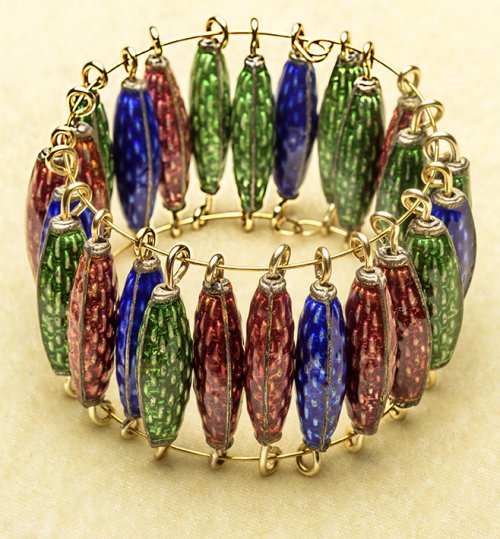
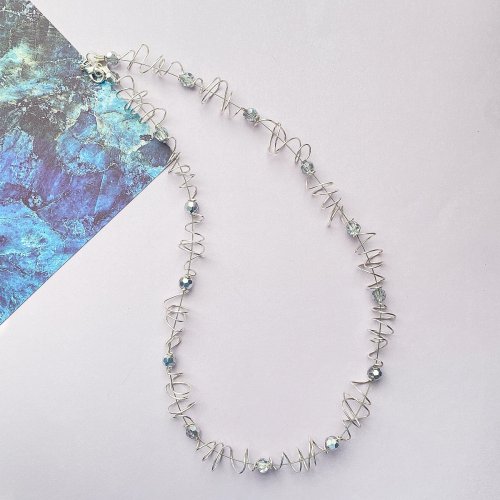
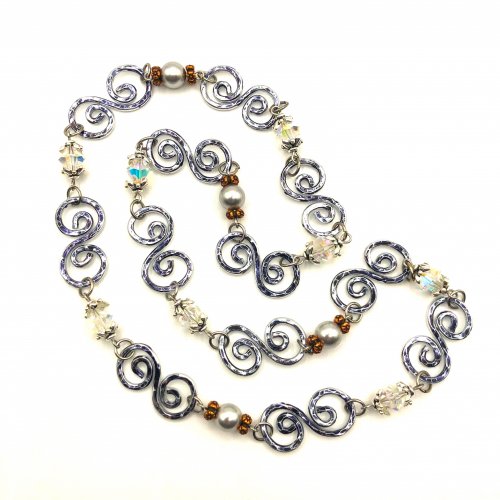


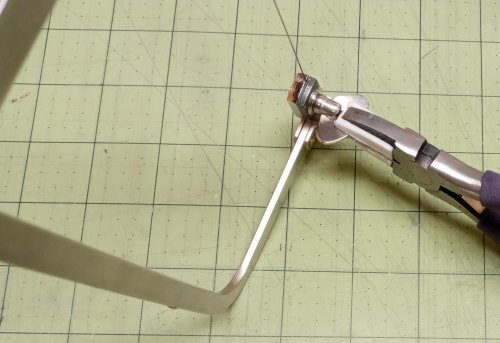

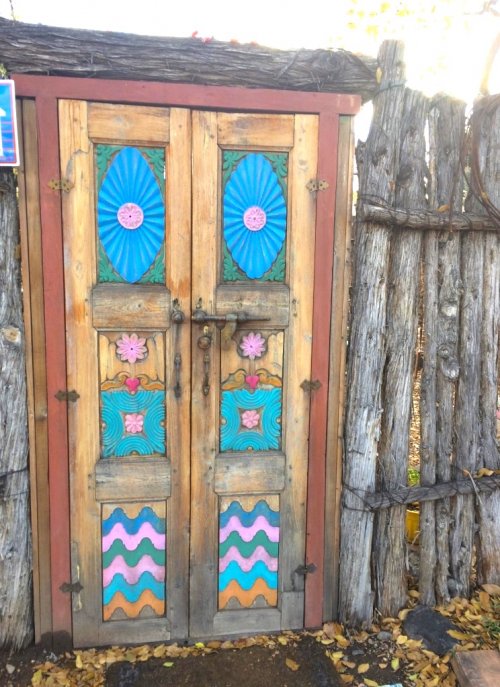



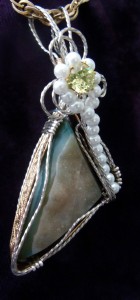

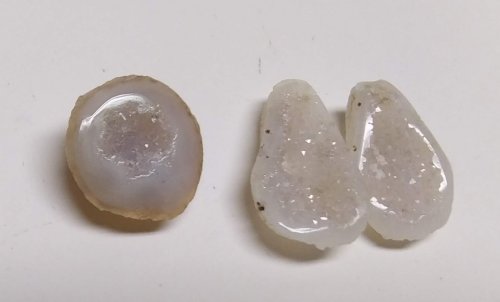 What is Druzy
What is Druzy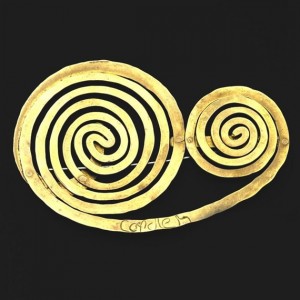 Coiled Wire Jewelry Series Part 1 - Everything New is Old
Coiled Wire Jewelry Series Part 1 - Everything New is Old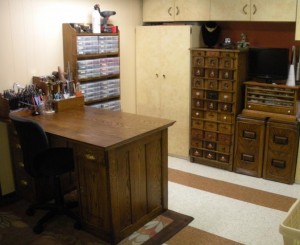 Where do you create
Where do you create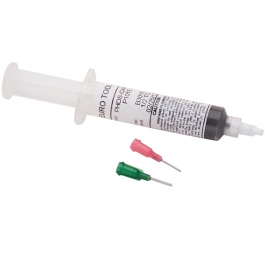 Soldering on Copper
Soldering on Copper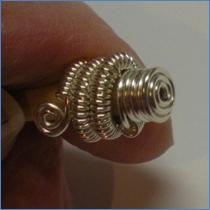 Charting Your Creations
Charting Your Creations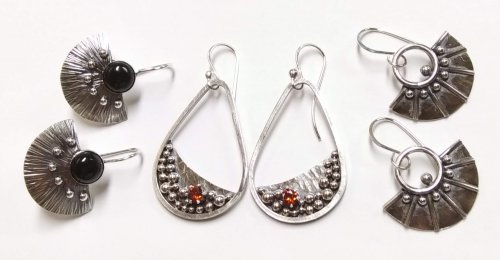 Design Process with 3 Earrings
Design Process with 3 Earrings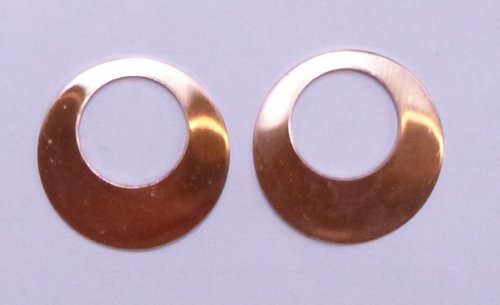 How to Use Disc Cutters to Make Metal Washers
How to Use Disc Cutters to Make Metal Washers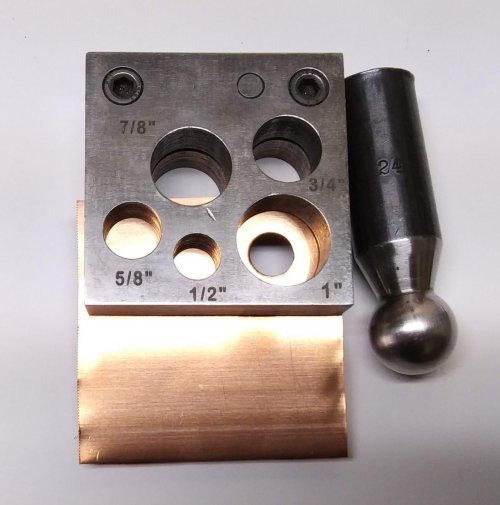 Disc Cutter Basics and How to Make Metal Washers
Disc Cutter Basics and How to Make Metal Washers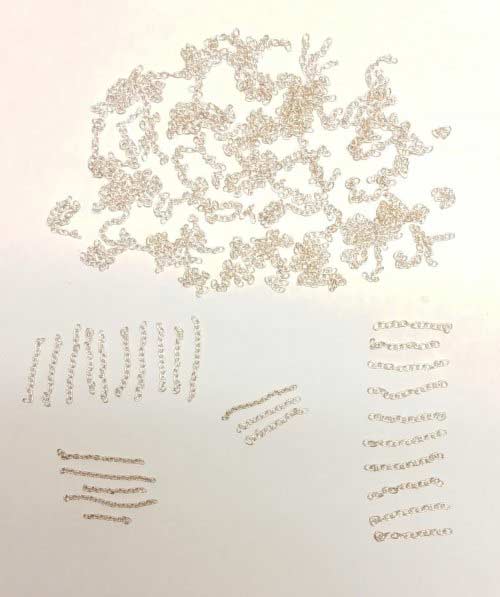 I Am Not a Hoarder
I Am Not a Hoarder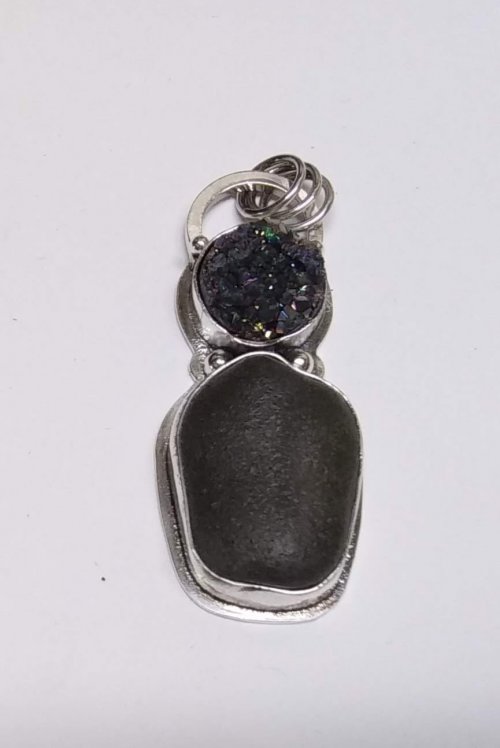 The Beauty of Druzy
The Beauty of Druzy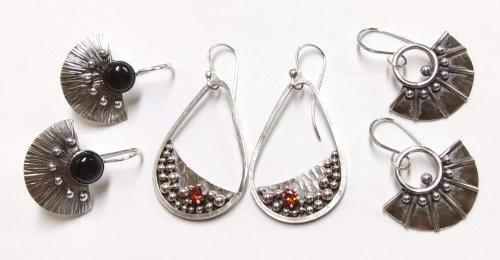 Design Process with 3 Different Earrings
Design Process with 3 Different Earrings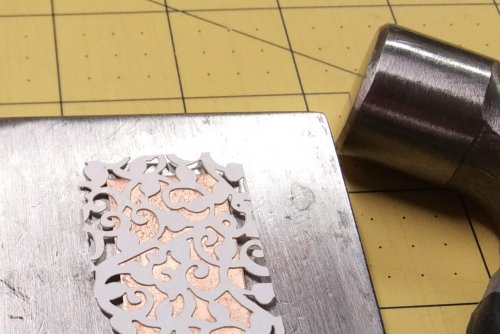 Think Outside the Box - Alternative Metal Texturing
Think Outside the Box - Alternative Metal Texturing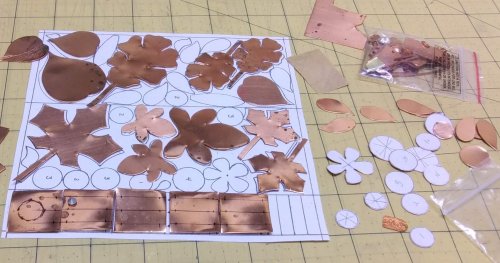 Fall Leaves for Your Designs
Fall Leaves for Your Designs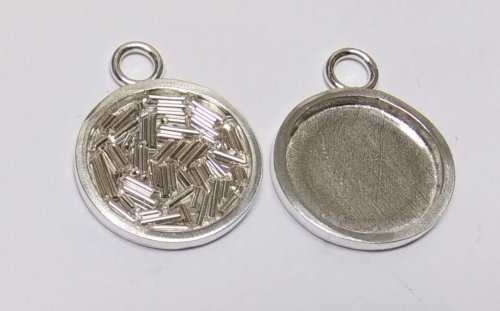 Cholula "Folk Art" Charms
Cholula "Folk Art" Charms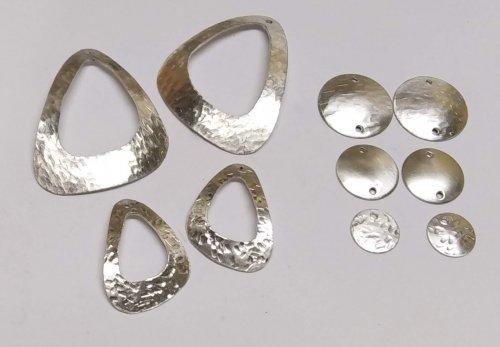 Lemons to Lemonade
Lemons to Lemonade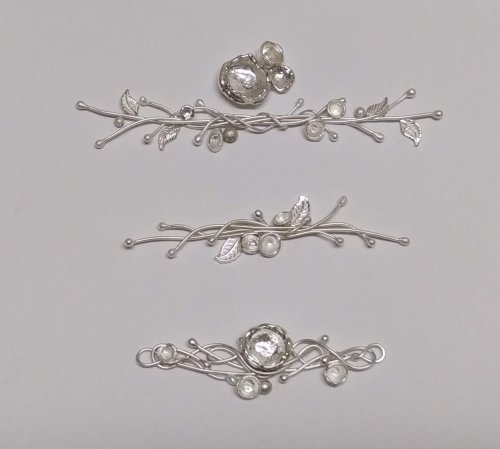 Why You Should Take a Class
Why You Should Take a Class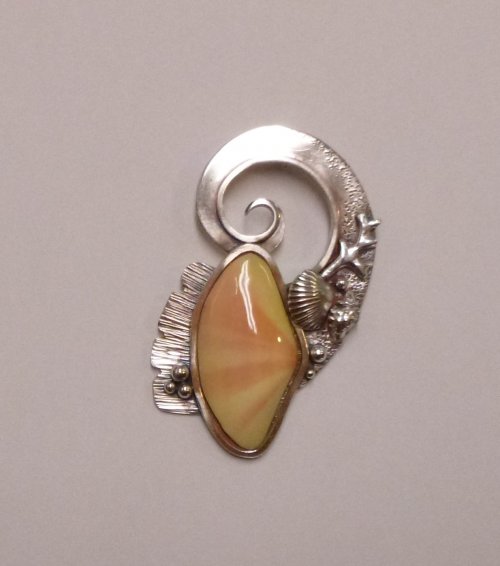 Bead, Shell, and Rock Cabochons
Bead, Shell, and Rock Cabochons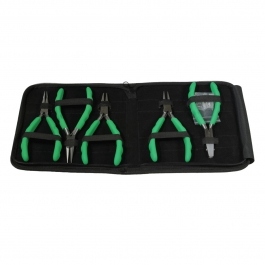 What Tools Do I Need for Wirework and Bead Stringing - Start With The Basics
What Tools Do I Need for Wirework and Bead Stringing - Start With The Basics 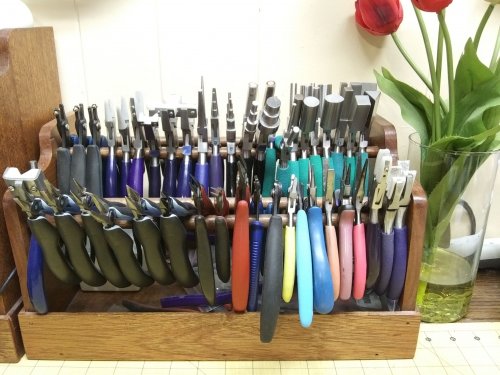 Choosing Pliers
Choosing Pliers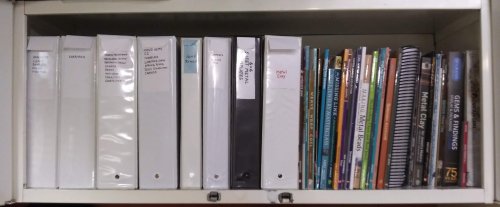 Saving, Storing, Using Tutorials
Saving, Storing, Using Tutorials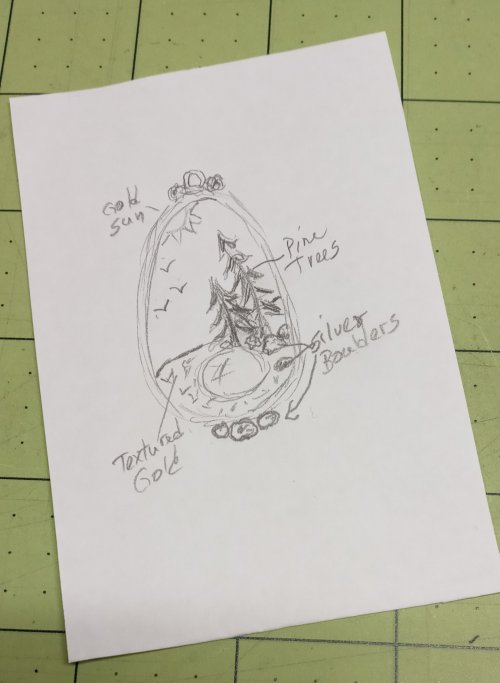 Flop to Flip
Flop to Flip The Story of Turquoise
The Story of Turquoise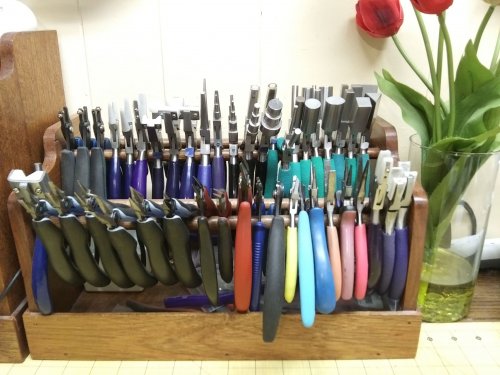 Non Marring Tools
Non Marring Tools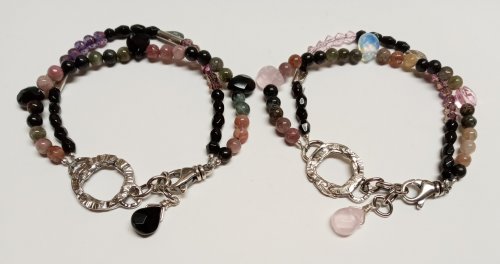 Using Lower Quality Beads
Using Lower Quality Beads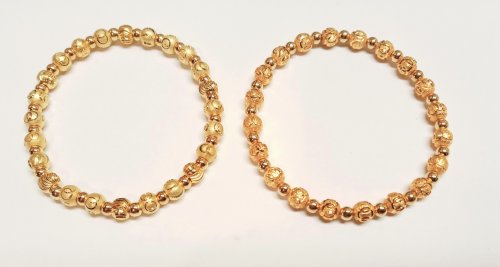 Differences in Gold Plating
Differences in Gold Plating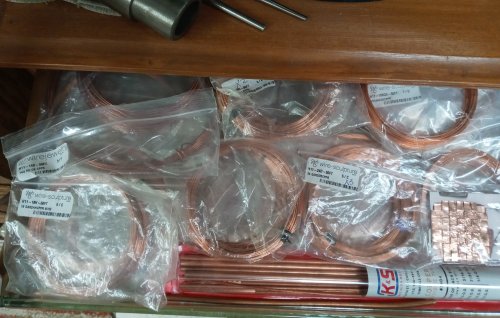 Inventorying Your Supplies
Inventorying Your Supplies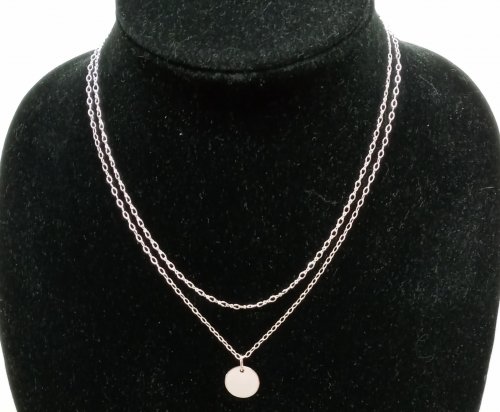 Engineering the Multi-chain Necklace
Engineering the Multi-chain Necklace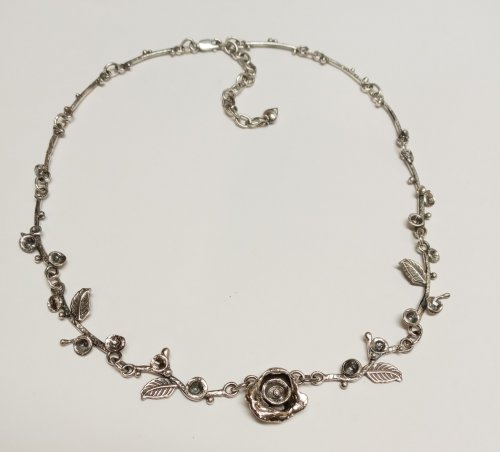 Benefits of Extender Chains
Benefits of Extender Chains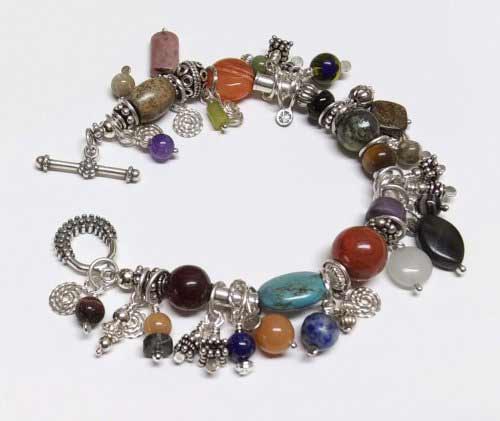 My Most Often Used Embellishments
My Most Often Used Embellishments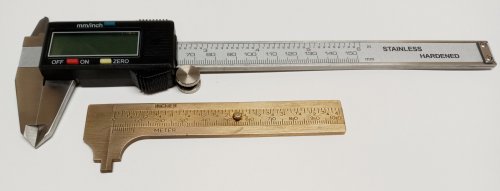 Sliding Gauges and Calipers
Sliding Gauges and Calipers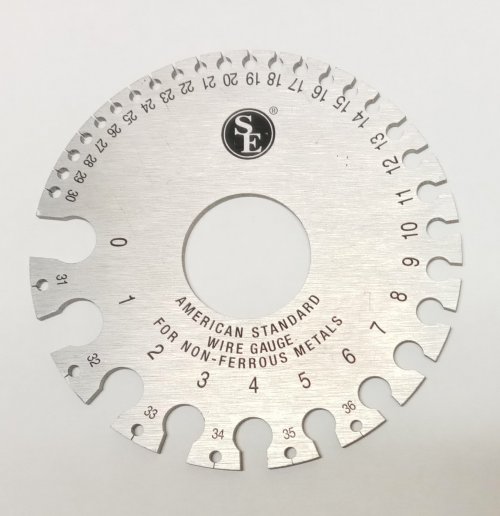 Wire and Sheet Gauge Measuring Tool
Wire and Sheet Gauge Measuring Tool 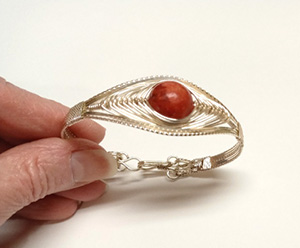 Silver Plated Copper Craft Wire
Silver Plated Copper Craft Wire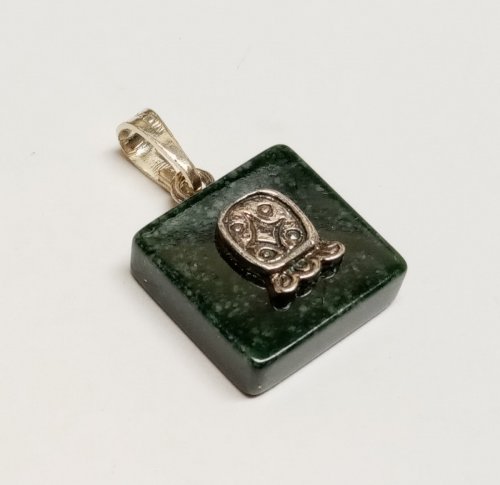 Jewelry from Other Cultures
Jewelry from Other Cultures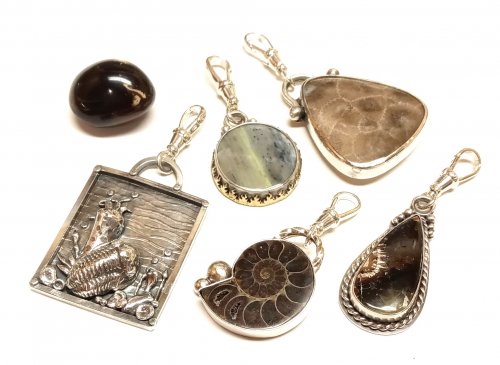 Conversation Starters
Conversation Starters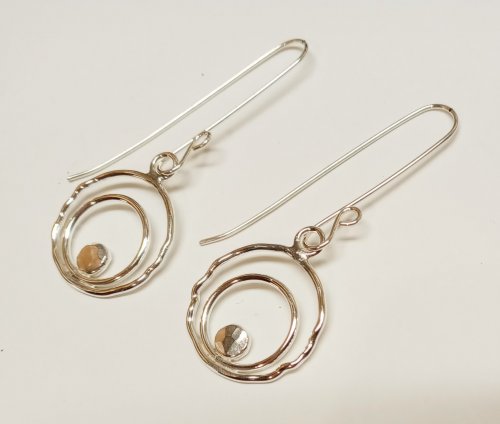 Well, That Didn't Work, Now What
Well, That Didn't Work, Now What
